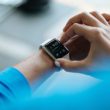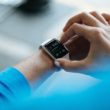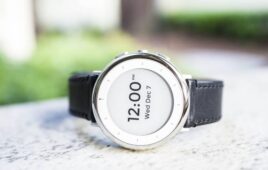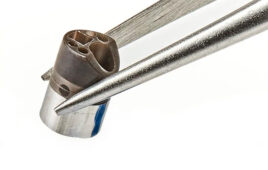
[Image from UC San Diego via Flickr]
1. This glove measures muscle stiffness in physical exams
A team of researchers at the University of California San Diego and Rady Children’s Hospital has created a glove that can accurately measure muscle stiffness during a physical exam.
“Our goal is to create a system that could augment existing medical procedures by providing a consistent, objective rating,” said Harinath Garudadri, the project’s lead investigator, in a press release.
Muscle stiffness can be evaluated using the hospital-standard Modified Ashworth Scale, which is a 6-point rating scale. It is objective and varies by doctor. The rating received on this test determines the dosage of medication a patient should be prescribed to help manage spasticity. If the measurements are inaccurate, it could risk a patient having an overdose or ineffective treatments.
“Many clinical exams and procedures are very subjective and rely on measurements that are done with a physician’s hands,” said Andre Skalsky, director of the division of Rehabilitation Medicine at Rady Children’s Hospital. “We often make major medical decisions and diagnoses based on touch and feel. With this technology, we can start to develop objective measurements for subjective processes.”
The robotic and sensor glove is built onto a regular sports glove that a doctor can wear while holding and moving a patient’s limb while moving it back and forth during a physical exam. Three hundred pressure sensors are taped to the glove and measure the force needed to move a limb. A motion sensor on the back of the glove measures how fast the limb moves. The entire glove connects to a computer through a USB cable.
The sensor data is transmitted to a computer where it gets integrated, processed and mapped in real time with advanced signal processing algorithms created by Garudadri’s research group. The computer is able to calculate the power needed to move the limb, and the more power used, the more severe a person’s spasticity is.






